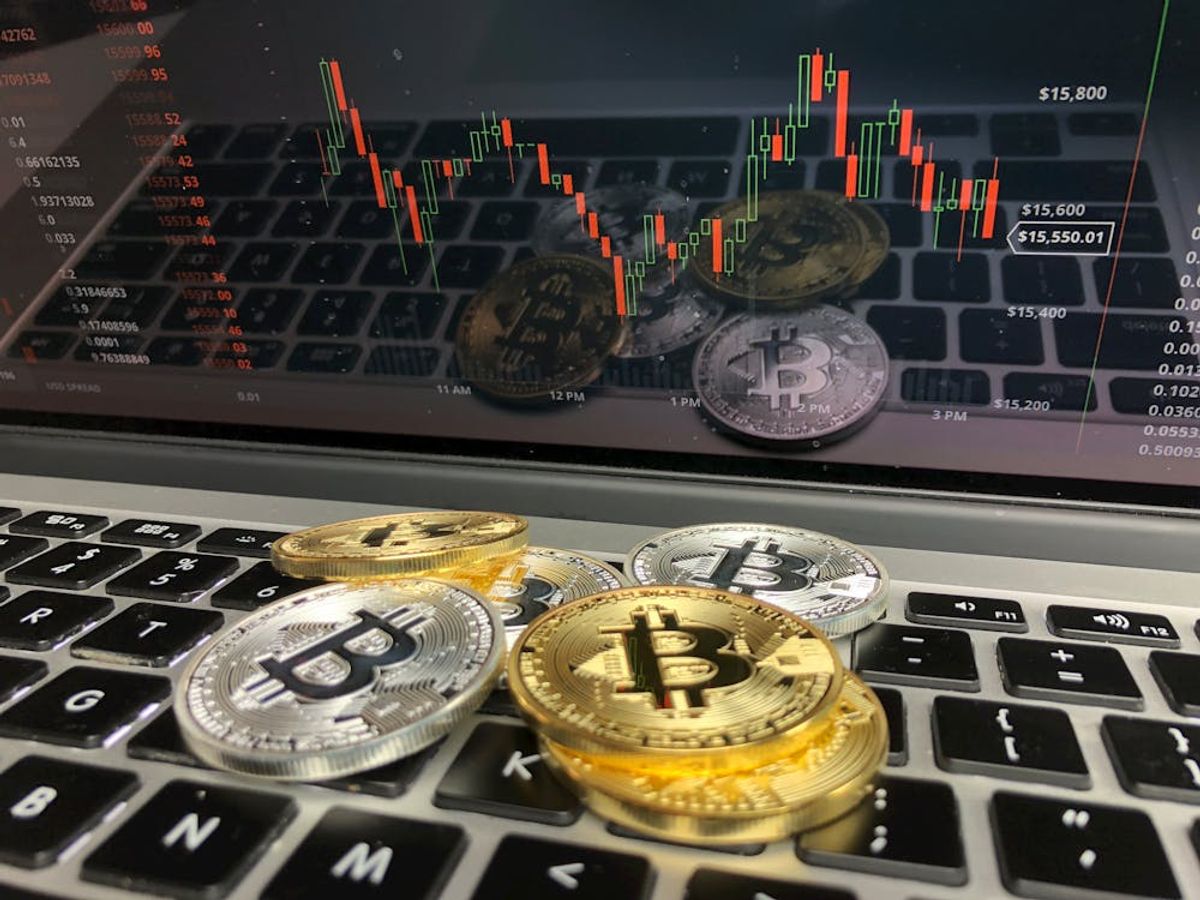As the allure of cryptocurrencies continues to captivate investors and traders alike, the need for reliable and efficient cryptocurrency exchanges becomes increasingly critical. This comprehensive guide delves into the multifaceted world of crypto exchanges, offering a detailed exploration of their landscape, features, and services in 2024. It aims to arm you with the knowledge necessary to navigate this dynamic marketplace, whether you’re a seasoned trader or a newcomer to the crypto scene.
Key Takeaways
- The landscape of cryptocurrency exchanges in 2024 is diverse, with centralized and decentralized platforms offering unique features for different trading needs.
- When selecting a crypto exchange, it’s essential to consider user experience, security protocols, fee structures, and the range of supported cryptocurrencies.
- Advanced trading features like margin trading, automated tools, and staking services can significantly enhance trading strategies on crypto exchanges.
- Educational resources, community support, and staying abreast of market trends are crucial for traders to make informed decisions and remain competitive.
- Careful comparison and analysis of the top crypto exchanges, taking into account personal trading goals and security requirements, can lead to a more fruitful trading experience.
Understanding the Landscape of Crypto Exchanges
Defining Cryptocurrency Exchanges
At its core, a cryptocurrency exchange is a digital marketplace where traders can buy, sell, and exchange cryptocurrencies. These platforms are akin to traditional stock exchanges but are tailored for digital currencies like Bitcoin, Ethereum, and many others. Users can trade these digital assets against fiat currencies or other cryptocurrencies, depending on the exchange’s offerings.
Cryptocurrency exchanges are pivotal in the digital currency ecosystem, providing the infrastructure for users to engage with the crypto economy. They vary in terms of services provided, with some offering simple buy and sell operations, while others cater to advanced trading with a plethora of features.
When selecting a crypto exchange, it’s essential to consider your trading needs, security requirements, and the fees involved to ensure it aligns with your investment strategy.
The following list outlines the three main types of crypto exchanges:
- Centralized exchanges (CEX) – Operated by companies, offering high liquidity and advanced trading features.
- Decentralized exchanges (DEX) – Peer-to-peer platforms without a central authority, focusing on privacy and security.
- Hybrid exchanges – Combining elements of both CEX and DEX to provide a balanced offering.
Centralized vs. Decentralized Platforms
In the realm of cryptocurrency exchanges, the distinction between centralized and decentralized platforms is pivotal. Centralized exchanges are akin to traditional financial institutions, operated by a central authority that oversees transactions, providing a user-friendly experience with high liquidity and fast order processing. On the other hand, decentralized exchanges (DEXs) empower users with peer-to-peer trading, leveraging blockchain technology to facilitate direct asset transfers without intermediaries.
While centralized platforms may offer enhanced services and ease of use, they also pose a risk of single points of failure and may be more susceptible to hacking. Decentralized platforms, conversely, grant users control over their private keys, enhancing security at the cost of potentially higher fees and a more limited selection of cryptocurrencies.
The choice between centralized and decentralized exchanges is a balance between convenience and control. It’s essential to consider your priorities, whether they lean towards the robust features and support of centralized exchanges or the autonomy and security of decentralized platforms.
For those entering the crypto space, centralized exchanges often serve as the initial gateway, especially for fiat-to-crypto conversions. However, as one’s expertise grows, the allure of decentralized exchanges becomes apparent, with opportunities for reduced transaction costs and increased security. It’s advisable to employ a combination of both exchange types to optimize your trading strategy and asset security.
Key Features of Top Crypto Exchanges
The leading crypto exchanges of 2024 distinguish themselves through a combination of robust security measures, user-centric design, and a breadth of trading options. Security is paramount, with features like 2FA, cold storage, insurance, and IP whitelisting being standard among top platforms.
User experience is equally critical; a user-friendly interface ensures that both novice and expert traders can navigate the platform efficiently. Competitive fees, a wide selection of cryptocurrencies, and high liquidity are also key attributes that traders consider when choosing an exchange.
The best crypto exchanges strike a balance between advanced features for expert traders and simplicity for those just starting out.
Here’s a quick overview of what to expect from top-tier exchanges:
- Robust security protocols
- Intuitive user interface
- Competitive fee structures
- Wide range of supported cryptocurrencies
- High liquidity to facilitate quick trades
In this rapidly evolving market, the right exchange can significantly impact your trading success.
Navigating the Best Crypto Exchanges of 2024

Comparative Analysis of Leading Platforms
In the dynamic realm of cryptocurrency exchanges, a comparative analysis is crucial for traders to discern the best platform that aligns with their investment strategy. The following table encapsulates key aspects of top exchanges as of March 2024:
| Exchange | Security | Fees | User Experience |
|---|---|---|---|
| Gemini | High | Low | Intuitive |
| Binance.US | High | Moderate | Advanced |
| Webull Pay | Moderate | Low | User-friendly |
| Kraken | High | Low | Professional |
| Crypto.com | High | Moderate | Streamlined |
| Fidelity Crypto | High | Low | Comprehensive |
| Interactive Brokers Crypto | High | Low | Versatile |
It’s essential to weigh these factors against personal trading preferences to make an informed decision.
As highlighted by USA Today’s title: Best crypto exchanges and apps of March 2024, our ranking serves as a general guide. The methodology behind this ranking involves rigorous scrutiny of security protocols, fee structures, and user experience to ensure traders can navigate the market with confidence.
User Experience and Interface Design
The user experience and interface design of a crypto exchange are pivotal in ensuring that both novice and seasoned traders can navigate and execute trades with ease. A well-designed interface can significantly enhance the trading experience, providing clear navigation, accessible features, and a seamless flow of trading activities.
- Intuitive navigation: Users should be able to find necessary features quickly.
- Responsive design: The platform should be accessible across various devices.
- Clear instructions: New users benefit from straightforward guidance on executing trades.
The goal is to minimize confusion and maximize efficiency, allowing traders to focus on their investment strategies rather than on figuring out how to use the platform.
When evaluating exchanges, consider the following:
- Security: Look for platforms with robust measures like two-factor authentication.
- Fees: Be aware of trading commissions and withdrawal charges.
- Support: Responsive customer support is crucial for a positive user experience.
Security Protocols and User Protection
In the dynamic realm of crypto exchanges, security is paramount. Users must navigate a landscape where the protection of digital assets is critical. To ensure safety, exchanges implement a variety of security protocols and measures designed to safeguard user accounts and funds.
- Enable robust security features like Multi-Factor Authentication (MFA) and whitelisting during the onboarding process.
- Regularly withdraw a portion of crypto assets to a non-custodial wallet, ensuring control over private keys.
- Study backup and restore protocols for wallet recovery in case of device loss or damage.
It’s essential to combine the use of centralized and decentralized platforms while adhering to best practices such as strong passwords and two-factor authentication to optimize asset security.
OKX, as an example, prioritizes user protection by employing cold storage for the bulk of user funds, enabling 2FA, anti-phishing codes, and withdrawal whitelist addresses. Regular security audits are conducted to maintain the integrity of the platform. Users should also consider physical security options like paper wallets or multi-signature setups to further decentralize and secure access to their assets.
Strategies for Selecting the Right Crypto Exchange

Assessing Your Trading Needs and Goals
Before diving into the world of crypto trading, it’s essential to assess your trading needs and goals. This self-evaluation will guide you in selecting a platform that aligns with your investment strategy and risk tolerance.
- Determine your investment style: Are you a day trader, a swing trader, or a long-term investor? Each style requires different features from an exchange.
- Understand your risk profile: How much volatility can you handle? Newer traders might start with a smaller portion of their capital to manage risk effectively.
- Evaluate your technical requirements: Do you need advanced charting options, or is a simple interface more suitable?
Assessing liquidity is crucial for smooth trading. Look for exchanges with high trading volumes and depth of order books for the cryptocurrencies you’re interested in.
Remember, you can’t trade if you don’t have any money. Keeping some cash in reserve means you’ll always have a bankroll to fund your trading. Taking measured steps lets you gain experience in a risk-managed way as you navigate your next moves at your own pace.
Understanding Fees and Pricing Structures
When engaging with crypto exchanges, it’s crucial to grasp the fee structures that can significantly impact your trading profitability. The most common model you’ll encounter is the maker/taker fee system, which differentiates between those providing liquidity (makers) and those taking it (takers).
Here’s a simplified breakdown of typical fees you might see:
- Trading Fees: Charged per transaction, often as a percentage of the trade value.
- Withdrawal Fees: Costs associated with moving your crypto off the platform.
- Deposit Fees: Some exchanges charge for depositing funds or crypto.
- Account Maintenance: Periodic charges for account management.
It’s essential to compare these fees across various platforms as they can vary widely and affect your investment returns. Remember, lower fees do not always equate to better value if the exchange lacks in other areas such as security or user experience.
Evaluating Liquidity and Currency Support
When selecting a crypto exchange, liquidity is a critical factor that can significantly impact your trading experience. High liquidity ensures that you can buy and sell assets quickly, with minimal slippage, which is the difference between the expected price of a trade and the price at which the trade is executed.
Currency support is equally important, as it determines the variety of cryptocurrencies you can trade. Exchanges with a broad selection of currencies provide more opportunities for diversification and arbitrage. Below is a comparison of two popular exchanges based on their currency support and associated fees:
| Exchange | Number of Supported Currencies | Trading Fee Starting Rate |
|---|---|---|
| Binance | 350+ | 0.1% |
| Crypto.com | 250+ | 0.4% |
It’s essential to consider both liquidity and the range of available currencies when choosing an exchange. This ensures that you have access to a wide market with the ability to execute trades efficiently and at fair prices.
Remember, while fees are an important consideration, they should not be the sole deciding factor. Assess the overall value provided by the exchange, including security features, user experience, and customer support.
Advanced Trading Features and Services

Margin Trading and Leverage Options
Margin trading and leverage are powerful tools in the arsenal of a cryptocurrency trader, allowing for the amplification of trading positions beyond the initial capital. Leverage can magnify both profits and losses, making it a double-edged sword that requires careful risk management.
When engaging in margin trading, it’s crucial to understand the terms and conditions set by the exchange, as well as the interest rates charged for borrowing funds.
Several exchanges offer varying degrees of leverage, with some allowing traders to leverage their positions up to 100x. However, it’s important to note that higher leverage increases the risk of liquidation if the market moves against the trader’s position. Here’s a brief overview of margin trading options:
- Crypto futures: Futures are a way to bet on price movements in Bitcoin, using leverage to potentially generate significant returns or losses.
- Bitcoin ETFs: As of January 2024, several Bitcoin ETFs have been approved, providing an alternative way to gain exposure to Bitcoin’s price movements with the potential for leverage.
In the context of margin trading, risk management strategies differ significantly between long-term investors and short-term traders. While a long-term investor may adopt a ‘never sell’ approach, a short-term trader might set strict selling rules to prevent small declines from turning into substantial losses.
Automated Trading Tools and Bots
The integration of automated trading tools and bots has become a game-changer in the realm of crypto exchanges. These tools offer the ability to execute trades at a speed and consistency that is impossible for human traders. They are designed to follow specific market indicators and can react instantaneously to market movements, providing a significant advantage in volatile markets.
- Automated trading tools can analyze market trends and execute trades based on predefined criteria.
- Trading bots can operate 24/7, allowing traders to take advantage of opportunities even when they are not actively monitoring the markets.
- Bots can be programmed for various strategies, from simple price threshold actions to complex algorithmic trading.
The right set of tools can empower traders to optimize their strategies and improve their market presence. While these tools can offer substantial benefits, it is crucial for traders to understand their mechanisms and potential risks.
Selecting the appropriate automated trading tool or bot requires careful consideration of the trader’s goals and the specific features offered by each tool. It is also essential to ensure that the chosen platform supports these advanced features and provides a user-friendly interface for seamless integration.
Staking and Lending Services
In the dynamic realm of crypto exchanges, staking and lending services have emerged as pivotal features for users seeking to maximize their digital asset holdings. These services not only provide additional avenues for earning interest but also contribute to the overall liquidity and stability of the cryptocurrency market.
Decentralized Finance (DeFi) platforms have revolutionized the way we interact with financial services, offering a more autonomous and flexible approach. Users can engage in peer-to-peer lending or staking directly, without the need for traditional financial intermediaries. This democratization of finance empowers individuals to take control of their investments and participate in governance decisions.
While staking involves committing your crypto assets to support a network and earn rewards, lending services allow you to loan your assets to others and earn interest. Both practices require a thorough understanding of the risks and rewards involved.
It’s essential to consider the security measures and KYC (Know Your Customer) policies of the platform you choose for these activities. A diverse offering of cryptocurrencies can also enhance your trading experience, allowing for a broader range of investment opportunities.
Staying Informed: Resources and Community Support

Educational Materials for Traders
In the dynamic realm of cryptocurrency trading, educational materials are indispensable for both novice and experienced traders. These resources equip individuals with the necessary knowledge to navigate the complexities of the market.
Community and support play a vital role in crypto trading. Leveraging forums, social media, and educational resources can enhance trading outcomes and knowledge. Selecting reliable platforms is key for success.
Remember, while these services offer convenience and accessibility, prudent decision-making and diligent research remain paramount in achieving financial goals.
Here’s a list of educational categories that traders should consider exploring:
- Investing
- Best investment accounts
- Explore investments and accounts
- Retirement
- Planning and strategy
- Investing and retirement calculators
- Best IRA accounts
- Best online brokers for trading
- Best online brokers for beginners
- Best robo-advisors
- Best options trading brokers and platforms
- Best trading platforms for day trading
- Stocks
- Funds
- Bonds
- Real estate and alternative investments
- Cryptocurrency
- Employee equity
Online Forums and Customer Service
The crypto industry’s customer service often falls short compared to traditional financial services. Many exchanges lack the option to speak directly with a representative, posing a challenge for users seeking immediate assistance. However, online forums and community support can bridge this gap, providing a platform for peer-to-peer help and advice.
- Help center
- Support team
- Community forums
- Security FAQs
These resources are crucial for users to navigate issues and learn more about the platform’s features and policies. It’s important for users to familiarize themselves with the available support channels of their chosen exchange.
While direct customer service may be limited, the collective knowledge and experience found in online communities can be invaluable for both new and seasoned traders.
Keeping Up with Market Trends and Updates
In the fast-paced world of cryptocurrency, staying abreast of market trends and updates is crucial for informed trading decisions. Subscribing to specialized newsletters can be an effective way to receive curated information and analysis. For instance, newsletters like ‘First Mover’ and ‘The Node’ provide insights into the latest market movements and the biggest news of the day, respectively.
To further enhance your knowledge, consider following reputable news sources. CoinDesk, for example, is a leader in providing comprehensive news and price data for Bitcoin, Ethereum, and other cryptocurrencies. Their coverage includes in-depth analysis, video updates, and live price tracking, which can be invaluable for staying informed.
Remember, the cryptocurrency market is volatile and unpredictable. Regularly consulting a variety of resources can help you grasp the nuances of the market and make more strategic trading decisions. As always, combine this with your own research and analysis to tailor your approach to the market’s ever-changing dynamics.
Conclusion
As we’ve explored the dynamic landscape of cryptocurrency exchanges in 2024, it’s clear that the right platform can significantly impact your trading experience and investment outcomes. From the comprehensive list of top exchanges like OKX, Bybit, and Coinbase, to the critical factors such as security, user interface, and fee structure, this guide has aimed to equip you with the knowledge to make an informed decision. Remember, while the allure of digital assets is strong, the importance of due diligence cannot be overstated. Whether you’re a seasoned investor or a newcomer to the crypto world, always prioritize your needs and exercise caution. With the insights from this guide, you’re now better prepared to navigate the vibrant world of crypto exchanges and embark on your investment journey with confidence.
Frequently Asked Questions
What is a cryptocurrency exchange?
A cryptocurrency exchange is a platform that allows individuals to buy, sell, or trade cryptocurrencies for other digital assets or traditional currencies. Centralized exchanges are operated by companies that facilitate transactions, while decentralized platforms allow peer-to-peer trading without an intermediary.
How do centralized and decentralized crypto exchanges differ?
Centralized exchanges are managed by a single entity and offer ease of use, enhanced security, and customer support. Decentralized exchanges (DEXs) operate without a central authority, offering greater privacy and control over funds but with a steeper learning curve and typically lower liquidity.
What should I consider when choosing a crypto exchange?
When selecting a crypto exchange, consider factors like security measures, user interface, fee structure, supported cryptocurrencies, liquidity, and customer support. Your trading goals and the type of trades you plan to execute will also influence your choice.
What are some of the top crypto exchanges in 2024?
As of 2024, top crypto exchanges include OKX, Bybit, KuCoin, Coinbase, Kraken, and Binance, among others. These platforms are recognized for their comprehensive services, competitive pricing, and strong security protocols.
How important are security protocols in crypto exchanges?
Security protocols are crucial in crypto exchanges as they protect users’ assets and personal information from theft and unauthorized access. Look for exchanges with robust security measures such as two-factor authentication, cold storage, and insurance policies.
Can I trade cryptocurrencies through traditional brokers?
Yes, many traditional brokers now offer the ability to trade Bitcoin and a limited selection of other cryptocurrencies alongside stocks and other financial assets. However, they may not offer the same range or competitive pricing as specialized crypto exchanges.





